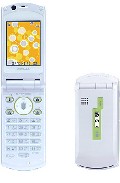MIT Tokyo Tour: 17-22 April 2005
 The Mobile Intelligence Japan mission PR release hit the Web yesterday, and the April 2005 trip promises to provide in-depth know-how and actionable intelligence direct from the heart of mobile Japan. MIJ will comprise six days of intensive company visits, executive presentations, application demonstrations, user sessions, and networking events, guided and analysed by WWJ Chief Editor Daniel Scuka. The agenda (contact us for a full copy) is complete and includes visits to and sessions with some of Tokyo’s hottest mobile players, including carriers, content providers, application developers and technology vendors. Access the full release here. For additional information, fees and registration, access the MIJ site here.
The Mobile Intelligence Japan mission PR release hit the Web yesterday, and the April 2005 trip promises to provide in-depth know-how and actionable intelligence direct from the heart of mobile Japan. MIJ will comprise six days of intensive company visits, executive presentations, application demonstrations, user sessions, and networking events, guided and analysed by WWJ Chief Editor Daniel Scuka. The agenda (contact us for a full copy) is complete and includes visits to and sessions with some of Tokyo’s hottest mobile players, including carriers, content providers, application developers and technology vendors. Access the full release here. For additional information, fees and registration, access the MIJ site here.


 In today’s program, we speak with Yutaka Nakamae from Panasonic’s Corporate External Relations Group who met with us during last fall’s CEATEC consumer electronics show in Tokyo. While there’s plenty of eye candy, including Panny’s 900iV (released in mid-2004), some skin-able models to please those who can’t decide on their favorite color and the very cool GSM X700 (now on sale in Europe), the real intelligence relates to finding our who’s boss in the carrier/manufacturer relationship (Hint: Who owns the customer?). Today’s proggy is not only a fun one — showing some great cellys from the October CEATEC show — but it also reconfirms the reality of the relationship between cell-phone makers and cellular operators in Japan — in this case, Panasonic and DoCoMo.
In today’s program, we speak with Yutaka Nakamae from Panasonic’s Corporate External Relations Group who met with us during last fall’s CEATEC consumer electronics show in Tokyo. While there’s plenty of eye candy, including Panny’s 900iV (released in mid-2004), some skin-able models to please those who can’t decide on their favorite color and the very cool GSM X700 (now on sale in Europe), the real intelligence relates to finding our who’s boss in the carrier/manufacturer relationship (Hint: Who owns the customer?). Today’s proggy is not only a fun one — showing some great cellys from the October CEATEC show — but it also reconfirms the reality of the relationship between cell-phone makers and cellular operators in Japan — in this case, Panasonic and DoCoMo. You can think of DoCoMo’s newest handsets as “901i lite.” The cell carrier hopes four, slim 700i handsets will sing and dance their way into ever-stingier consumers’ hearts and wallets. They are packed with would-be FOMA functionality minus the FeliCa e-wallet and could just provide a significant competitive advantage at a time when KDDI and Vodafone are still rushing to market with fully featured 3G battleships that command heavy-duty prices. Sometime-WWJ commentator Ken Gai’s take on the move is that Big D is merely launching a shrewd counter-attack on KDDI/au… and will use this series as launch pad to boost migration to 3G — perhaps even passing KDDI for total 3G subs by Christmas. But WWJ wonders: What else are they afraid of? The 700i-series handsets are packed with FOMA functions: Chaku Uta ring tones, Chaku Motion ring videos, Chara Den (character avatars that project the caller’s image during video calling), Deco-mail (HTML-formatted virtual stickers for decorating mobile email) plus a QVGA LCD screen, Java and Macromedia Flash applications. In fact, these cellys are almost FOMA in all but name.
You can think of DoCoMo’s newest handsets as “901i lite.” The cell carrier hopes four, slim 700i handsets will sing and dance their way into ever-stingier consumers’ hearts and wallets. They are packed with would-be FOMA functionality minus the FeliCa e-wallet and could just provide a significant competitive advantage at a time when KDDI and Vodafone are still rushing to market with fully featured 3G battleships that command heavy-duty prices. Sometime-WWJ commentator Ken Gai’s take on the move is that Big D is merely launching a shrewd counter-attack on KDDI/au… and will use this series as launch pad to boost migration to 3G — perhaps even passing KDDI for total 3G subs by Christmas. But WWJ wonders: What else are they afraid of? The 700i-series handsets are packed with FOMA functions: Chaku Uta ring tones, Chaku Motion ring videos, Chara Den (character avatars that project the caller’s image during video calling), Deco-mail (HTML-formatted virtual stickers for decorating mobile email) plus a QVGA LCD screen, Java and Macromedia Flash applications. In fact, these cellys are almost FOMA in all but name.